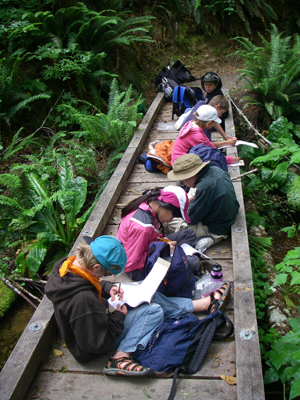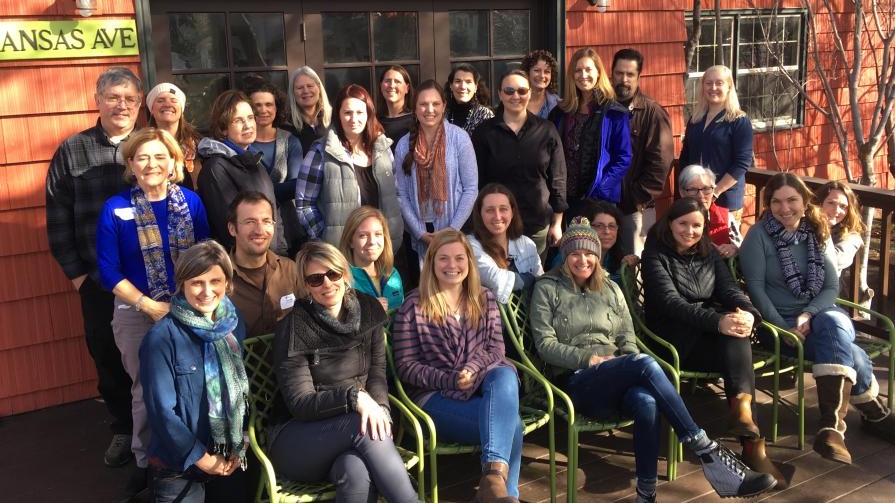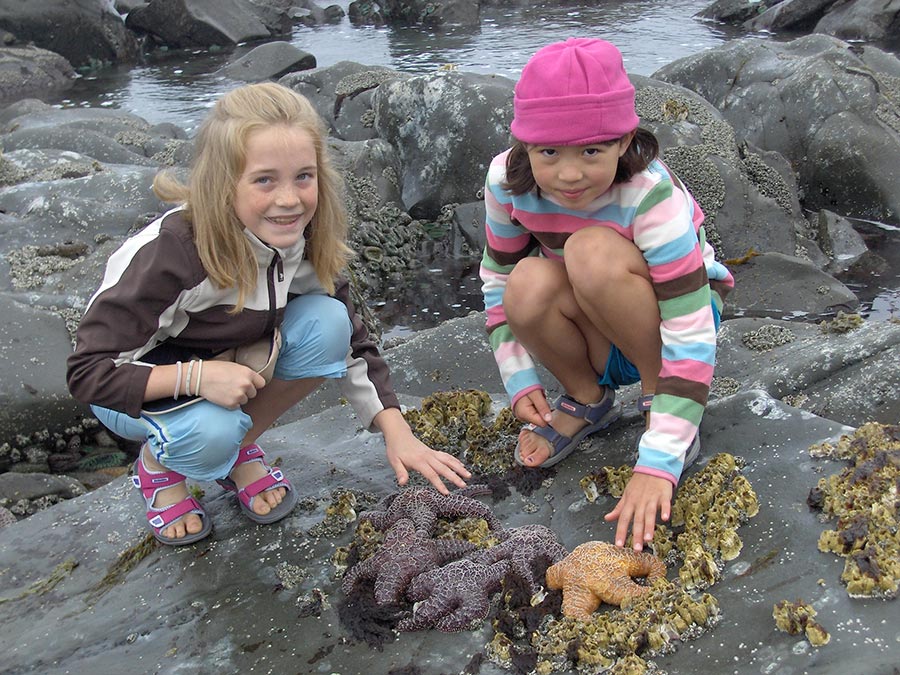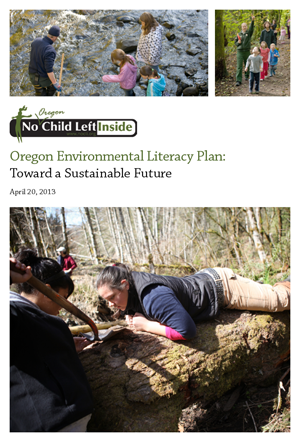What is Environmental Literacy?
An individual’s understanding, skills and motivation to make responsible decisions that considers his or her relationships to natural systems, communities and future generations.
Environmental Literacy is the desired outcome of environmental education which strives to provide learners with:
- Sound scientific information
- Skills for critical thinking
- Creative and strategic problem solving
- Decision-making
The National Science Foundation’s Advisory Committee for Environmental Research and Education noted that “Creating a scientifically informed citizenry requires a concerted, systematic approach to environmental education.”
Why Oregon?

Oregon is a special state. We are known for being a little different and immensely proud of our epic views and opportunities for exploration from the Wallowas to the Oregon Coast. The earliest known evidence of people living in Oregon shows that a strong relationship with natural resources has always defined the Oregon way of life. From Douglas fir trees to Chinook salmon, our landscapes, wildlife, coast and waterways have inspired our stories, our livelihood and our legacy. Oregon’s natural resources are the foundation of our state’s economy, and they have created a dynamic heritage that we must protect and sustain for coming generations.
Oregon is a world leader in cutting-edge environmental practices. States and countries across the globe look to Oregon for leadership and expertise in developing green and sustainable communities. As we strive to further understand the interrelationship between our environment, society and economy, it is imperative that we consider the role of the next generation.
About the Program
The goal of the Oregon Environmental Literacy Program is to support teachers in collaboration with non-formal educators to foster Environmental Literacy of Kindergarten through 12th grade students by engaging students in activities and experiences that:
- Increase their awareness, understanding, and knowledge of the environment and their relationship to it
- Participate as citizens in the stewardship of the environment
- Prepare them to engage in actions that ensure a sustainable future
- Contribute to establishing healthy lifestyles
For questions about OELP, please contact:
LeeAnn Mikkelson
OELP Program Coordinator
leeann.mikkelson@oregonstate.edu
(541)737-9121
OELP Resources

OELP Resource Directory
The Resource Directory will help you find resources, programs and field sites that will help you engage students in activities that build environmental literacy. Share this site with your colleagues and encourage your program partners to add their resources into this website.

Standards Integration: A Framework for Incorporating NGSS, Social Sciences, and Environmental Literacy into Classroom Curriculum
The Integration Document Team developed one-page documents for each grade level. Each page shows alignments between NGSS, geography, and social studies standards and provides guiding questions to support instruction. Thanks to Gray Family Foundation for their support in editing and printing the document.
Statewide Plan
Oregon Environmental Literacy Plan

The Oregon Environmental Literacy Plan is a collaborative statewide project, housed at Oregon State University Extension. Development of the OEL Plan was a comprehensive process that involved many diverse stakeholders and interests.
In June 2009, the Oregon Legislature passed the No Oregon Child Left Inside (NOCLI) Act, to establish a plan for providing students with a continuum of place-based, outdoor learning opportunities. This framework was to ensure that Oregon students graduate as
- critical thinkers,
- ecological problem solvers
- and engaged citizens.
On July 22nd, 2009, Oregon Governor Ted Kulongoski signed the NOCLI Bill into law saying:
“. . . the "No Oregon Child Left Inside Act" will provide our youth with classroom instruction about our vital natural resources and an opportunity to conduct field investigations in an outdoor learning setting. This experience is fundamental to our children and will help them develop a sense of stewardship towards Oregon's environment and help them make informed decisions about our natural resources in the future..."
Following the Governor’s signature an eleven-member task force, composed of officials from state environmental and education agencies and others, was formed to begin working on developing the OEL Plan. A list of the task force members can be found in the Oregon Environmental Literacy Plan.
In 2011 the legislature-approved the Oregon Environmental Literacy Plan: Toward a Sustainable Future.
The Plan puts forth a vision in which all Oregon students are:
- lifelong stewards of their environment and community
- willing and able to exercise rights and responsibilities of citizenship
- choose to interact frequently with the outdoors
- understand multi-faceted relationship to the natural world
- well-prepared to address the challenges the future holds
Integrating regular outdoor activity into a student’s learning and life experience is integral to achieving this vision.
The Plan has five learning strands that are designed to support the cultivation of environmentally literate students by integrating learning experiences inside and outside the classroom:
- Systems thinking
- Physical, living and human systems
- Interconnectedness of people and the environment
- Personal and civic responsibility
- Investigate, plan and create a sustainable future
Oregon Environmental Literacy (OEL) Plan: Toward a Sustainable Future
-
Document
-
Document
-
Document